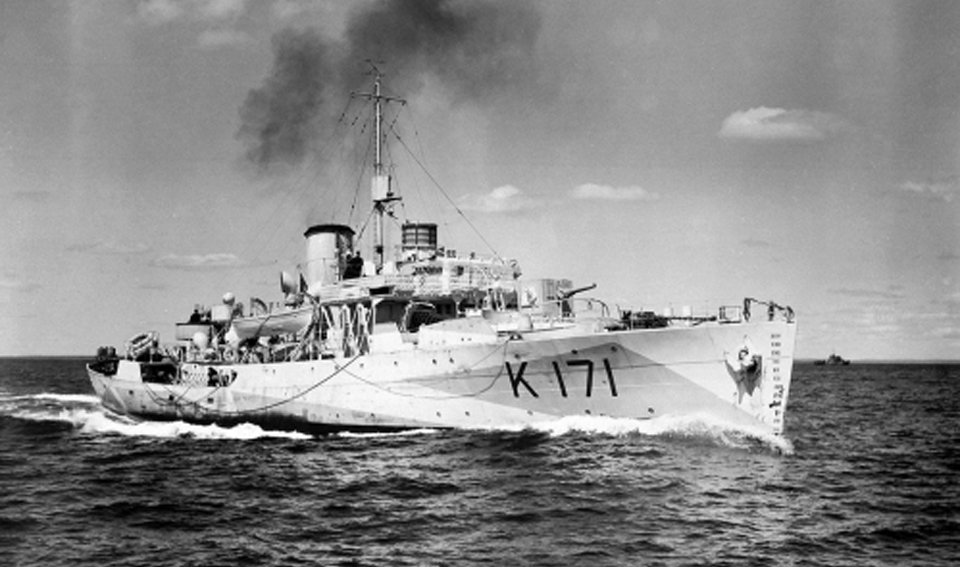KAMSACK — In 1939, Europe was at war and by 1940, continental Europe, from France to Norway, had been occupied by German forces. Britain stood alone and the sea lanes across the Atlantic were its only lifeline.
Supplying that critical lifeline were convoys of merchant ships bringing vital food, fuel and war material from North America. The role of the Royal Canadian Navy escorts including the tireless Flower-class corvettes like HMCS Kamsack (K171) was to protect the merchant ships against enemy submarine attacks and ensure the "safe and timely arrival of the convoy" at its destination. The escorts played a crucial role in ensuring Allied victory at sea during the pivotal Battle of the Atlantic.
This year marks the 80th anniversary of the end of the Battle of the Atlantic as well as the 80th anniversary of victory in Europe.
More than 100 of the corvettes including Kamsack, named after Kamsack, Sask., proudly bore the names of Canadian cities, towns and communities from coast to coast along with recognizing the people who built the 205-foot ships in Maritime, Quebec, Ontario and British Columbia shipyards. HMCS Kamsack was built by Port Arthur Shipbuilding, Port Arthur, Ont. and commissioned at Montréal, Que., in October 1941. The ship arrived at Halifax, N.S., later in October. Kamsack joined
Sydney Force the following month but soon transferred to Newfoundland Command and in January 1942, left St. John’s, N.L., to pick up the 36-ship convoy SC.65 (Halifax to Liverpool, UK).
In June, after three round trips, Kamsack was reassigned to Western Local Escort Force and served in it for the rest of the war. From June 1943, K171 was a member of Escort Group W-4, and from April 1944, a member of Escort Group W-3 conducting convoy escort duties in the western North Atlantic. During this period, Kamsack underwent two extensive refits: the first, at Liverpool, N.S. in November 1942, was completed at Halifax in January 1943; the second, during which the forecastle was extended, was carried out at Baltimore, Md., between late December 1943 and mid-March 1944.
HMCS Kamsack was paid off on July 22, 1945, at Sorel, Que., and sold to the Venezuelan Navy. Renamed Federación, the ship served until broken up in 1956.
HMCS Kamsack was awarded battle honours "Atlantic 1941 - 45".
Of the 123 corvettes to serve in the RCN during the war only HMCS Sackville remains, named after the town of Sackville, N.B. and commissioned in Saint John, N.B. in 1941. The "Last Corvette,” restored to its 1944 configuration, is a national historic site and was designated Canada's Naval Memorial in 1985. Owned, maintained and operated by the volunteer Canadian Naval Memorial Trust, Sackville is a popular visitor attraction on the historic Halifax, N.S. waterfront during the summer months. During the winter, the ship is berthed in His Majesty's Canadian Dockyard.
HMCS Sackville protected Canada in war, served faithfully in peace and continues, as Canada's Naval Memorial, to honour those who served. For more information on how to support "The Last Corvette" please visit www.cnmt.ca call 902-492-1424. Individual, unit or corporate support is most welcome and appreciated.




